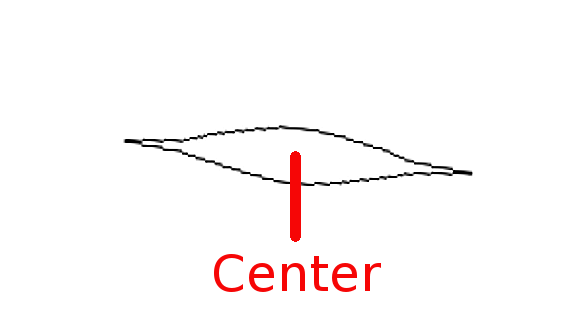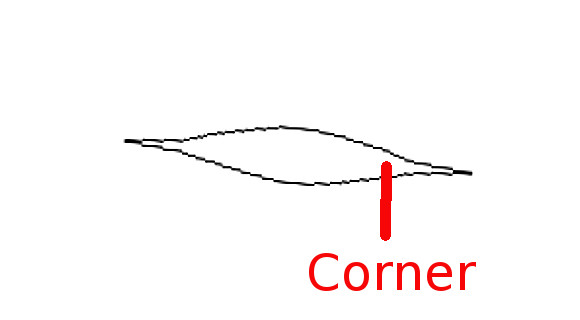
Eighth Bassoon Lesson, Part 1
Eighth Bassoon Lesson, Part 1. Articulation: stopping with the tongue, stopping with the air and embouchure, also hard and soft stops with the tongue. Practice technique: tongue diminuendo. New fingering, Eb3. By Terry B. Ewell. BDP#197. www.2reed.net/bdp.
<Intro
Music: “Home Sweet Home” from A Tune a Day,
lesson 29 number 6.>
In this lesson we will continue
our work with long tones and dynamics. Dynamics are controlled with the wind.
Articulation is most often controlled with the tongue. These two—the wind and
tongue—can operate independently. They do not need to be linked. Often I find a
common problem: articulation by many students is linked to the wind and not just
the tongue.
Let’s illustrate this by having a
“broken crescendo.”

<Example: broken crescendo
stopped with the tongue.>
I stopped each portion of that crescendo with my tongue. Now notice that the effect is very different if I try to make the crescendo by stopping with the air.

<Example: broken crescendo
stopped with the air and embouchure>
With an air and embouchure stop
to each note, the motion is halted a bit. That is OK if that is the effect you
want. However, if you want to really direct the musical motion through separated
notes, then use just the tongue for articulation. This is more effective.
I have a video on “Playing on the
Wind” that talks about this more.
http://www.youtube.com/watch?v=87Mga5-307w
Let’s illustrate this method of
articulation and musical shaping in Weissenborn page 12.
First I will play the last two
measures and then I will give the same gesture by playing the first two
measures.

<Examples from Weissenborn page
12, Moderato.>
Notice that I shape the gesture
with the wind. It is with my air, it is with my dynamics that the gesture, the
phrase is shaped. The articulation I am shaping with the tongue. In these last
two measures I use a legato tongue separating the pairs of eighth notes. In the
first two measures I separate the staccato with my tongue as well. Let me play
that again.
<Examples from Weissenborn page
12, Moderato.>
Did you notice that I didn’t
change my embouchure or air (between the two). I kept them the same, I just
changed the contact of the tongue on the reed.
Now I find that some students
can’t do this immediately. They have conditioned themselves to like the tongue
with the embouchure and the air in every articulation. Hopefully you can avoid
that bad habit.
I will play for you again that
last gesture, the last two measures, again followed by the first.
<Examples from Weissenborn page
12, Moderato.>
Now, if you don’t remember the
difference between the tongued stop of the notes vs. the stop of embouchure and
air, please review my third video in these bassoon lessons. That is BDP #33.
Now tongued stops on the reed can
vary. I can stop a note quite abruptly.

<Example of hard, abrupt stops>
Or I can stop it less suddenly.
<Example of soft, slower stops>
In fact if you gain enough
control of your tongue on the reed, you can even create a tongued diminuendo.
<Example of diminuendo with the
tongue only>
I am stopping the reed with my
tongue. Let’s stop here for a moment and let me explain this concept further. I
only demonstrate here the tongued decrescendo or diminuendo for the purposes of
practice. For you to learn to control your tongue on the reed. I never do this
slow stop in performances. However, the soft stops of notes are really just
tongued diminuendos occurring faster. So if you learn to master this slower stop
of the notes with the tongue then you will gain control of the stops of the
notes at a quicker tempo. So I encourage you to practice this exercise and
practice the timing of your stops: shorter or slower.
Now when your tongue hits the
reed you can make it more abrupt by tonguing right in the center of the reed.

You can make it less abrupt by
tonguing more towards the edge. In this case my reed is at a little bit of a
slant. I can tongue the lower right hand corner.

<Example of legato (right hand
corner) tonguing>
That gives very smooth tonguing.
So experiment with where your
tongue contacts the reed for more subtle articulation.
Now, I can also stop with the air
and embouchure.
<Example of air and embouchure
stops>
Learning to vary your
articulations will prepare you for much greater musical expression. You need to
master all of these techniques so that you will have the widest range of
articulations available.
Well Eb3 on the bassoon deserves
special attention. It is what is considered a “forked fingering” because a
finger is skipped.
Here we have one finger down, one
finger down, this finger is skipped.
Here are two standard fingerings
for Eb3. Choose one of these two fingerings that has the best sound and
intonation for you. For fast passages I use this Eb fingering.
Keep on practicing! Just a few
more lessons in this series left. Bye.
<Closing
Music: “Home Sweet Home” from A Tune a Day,
lesson 29 number 6.>
Copyright (c) 2016 By Terry B. Ewell. All rights reserved.